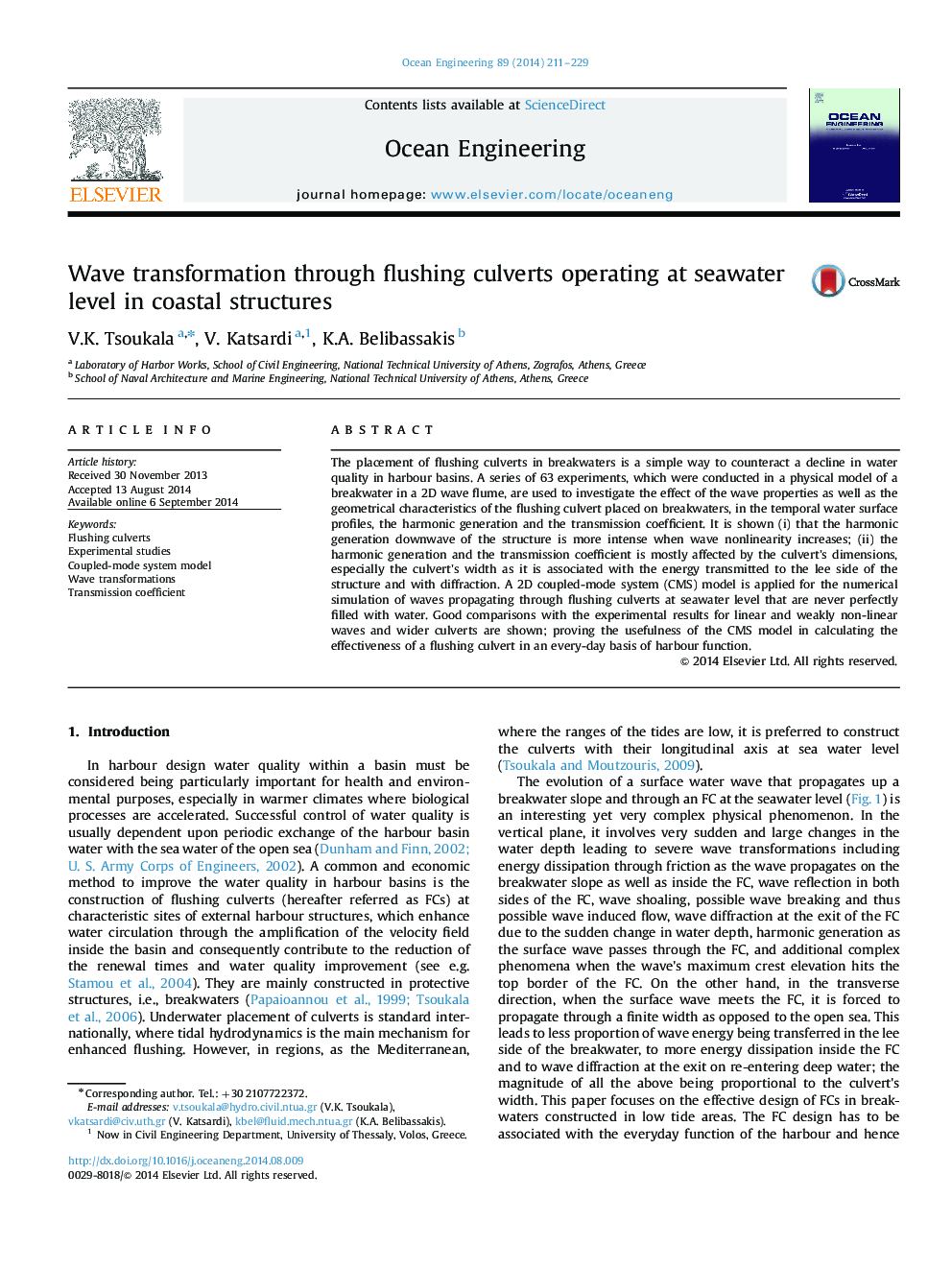| Article ID | Journal | Published Year | Pages | File Type |
|---|---|---|---|---|
| 8066309 | Ocean Engineering | 2014 | 19 Pages |
Abstract
The placement of flushing culverts in breakwaters is a simple way to counteract a decline in water quality in harbour basins. A series of 63 experiments, which were conducted in a physical model of a breakwater in a 2D wave flume, are used to investigate the effect of the wave properties as well as the geometrical characteristics of the flushing culvert placed on breakwaters, in the temporal water surface profiles, the harmonic generation and the transmission coefficient. It is shown (i) that the harmonic generation downwave of the structure is more intense when wave nonlinearity increases; (ii) the harmonic generation and the transmission coefficient is mostly affected by the culvert׳s dimensions, especially the culvert׳s width as it is associated with the energy transmitted to the lee side of the structure and with diffraction. A 2D coupled-mode system (CMS) model is applied for the numerical simulation of waves propagating through flushing culverts at seawater level that are never perfectly filled with water. Good comparisons with the experimental results for linear and weakly non-linear waves and wider culverts are shown; proving the usefulness of the CMS model in calculating the effectiveness of a flushing culvert in an every-day basis of harbour function.
Related Topics
Physical Sciences and Engineering
Engineering
Ocean Engineering
Authors
V.K. Tsoukala, V. Katsardi, K.A. Belibassakis,
